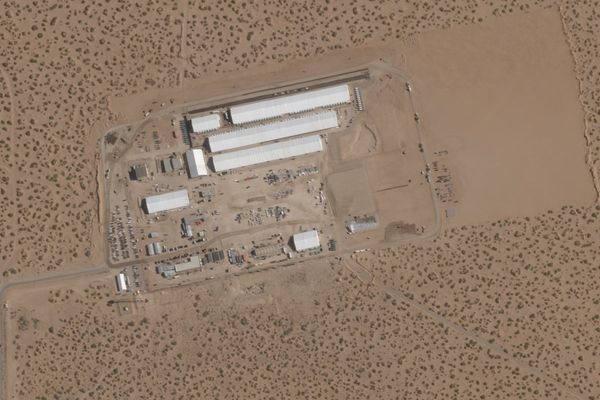
In the 1950s, the Soviets came to Antarctica. As part of its contribution to the International Geophysical Year of 1957-8, a global scientific jamboree, the Soviet Union began building research stations across the great southern land – largely in areas claimed by Australia.
Amid heightened cold war tensions, Australian officials were not pleased. Government records from the time reveal fears the Soviets might install defence infrastructure in Antarctica; the then foreign minister, Richard Casey, warned of missiles being launched on Sydney or Melbourne. The Australian Antarctic Territory is vast: at approximately 6m square kilometres (just shy of half of the landmass), the territory is almost the size of continental Australia itself. Plenty of room for Soviet missiles.
An article in an Australian periodical, Observer, headlined “We Warn the Tsar”, described the fate of Antarctica as “a matter of foreign policy par excellence”. Notwithstanding the hyperbole, this sentiment was largely echoed in other newspapers of the time. The Advertiser described the Soviet mission as “a potential threat to the security of Australia”, while the Sydney Morning Herald asked, suspiciously: “What are the Russians up to at Mirny [one of their bases]?”
Even the head of Australia’s scientific program in Antarctica, after visiting Soviet peers, worried in his diary: “I wonder have they ideas of submarine bases?”
I was reminded of these fears – which I had explored during archival research, subsequently published in History Australia journal in 2017 – after the announcement on Tuesday of new funding for Australia’s Antarctic program. Politics and science have always been uneasy bedfellows in Australia’s approach to Antarctica, and the announcement by Scott Morrison of almost a billion dollars in funding over the next decade represented continuity, rather than change.
Ever since Australian explorers first traversed the icy landmass at the turn of the 20th century, a blend of sometimes contradictory strategic and scientific motivations have loomed large. The division of new funding between strategic capacity and scientific endeavour underscored this tension: almost $250m for enhanced capabilities – drones, autonomous vehicles, helicopters, mobile stations – and dollops of money for different scientific projects (including $7.4m to understand the impact of climate change on Antarctica – no small irony given this government’s climate policy).
Of course these dual motivations are not neatly separable. The enhanced capabilities make more and better science possible. In Antarctic diplomacy, science is the major currency. But for a government that has slashed the university sector to the core during the pandemic, it is obvious that better science is not the sole motive for this funding boost. Strategic concerns are not far from the surface.

While the federal government did not name China in the announcement, it is obvious that the regional adversary’s growing interest in Antarctica partially explains Australia’s reinvigorated Antarctic program. As much was made clear by the environment minister, Sussan Ley: “We need to ensure that the Antarctic remains a place of science and conservation, one that is free from conflict and which is protected from exploitation.”
The coverage of Tuesday’s news said the quiet part of the government’s announcement out loud. The Australian Financial Review led with “PM pledges $804m to fight cold war in Antarctica”, noting that “the Chinese and Russians have an increasing interest in Antarctica”. The Guardian highlighted recent research from an Australian thinktank, the Lowy Institute, on Australia-China engagement over Antarctica. Chinese authorities are not blind to the strategic implications of this funding boost. Late on Tuesday, China’s state media outlet Global Times hit back: “Australia’s Antarctica plan stems from its hostility toward China”.
It remains to be seen whether growing tensions over Antarctica will see a return to the fears of the 1950s. Out of those tensions came the Antarctic treaty, signed in 1959, which banned military activity on the continent and recognised “that it is in the interest of all mankind that Antarctica shall continue for ever to be used exclusively for peaceful purposes”. Significantly, the treaty froze territorial claims to Antarctica – including Australia’s – but without renouncing them.
Australian efforts in Antarctica therefore always serve a dual purpose: promoting science and conservation while maintaining some degree of involvement across the Australian Antarctic Territory, lest the treaty system ever dissolve. In the Lowy Institute’s report, it was suggested that “China’s Antarctic stations and science seemed designed to position it for a territorial claim in the [Territory] if the Antarctic treaty were overturned”.
Such is the lingering sensitivity to these issues that some old records on Australia’s involvement in Antarctica, dating back six or more decades, remain sealed. One file which I tried to access, unsuccessfully, at the National Archives, contained this explanation: “The information canvasses matters relating to Australian sovereignty … and some of these issues still have currency … [public disclosure] could encourage challenges to Australian sovereignty”.
But for all that strategic aspirations may sit at odds with the spirit of international cooperation central to scientific collaboration, the experience of the 1950s – Australia’s red scare on ice – suggests that science ultimately transcends politics. Despite the political animosity between Australia and the Soviet Union during the International Geophysical Year, scientists from the two nations developed warm friendships.
It probably did not hurt that there were always “a dozen vodkas” involved, too. “Scientists,” wrote one Australian Antarctic official after a visit to a Soviet base in 1958, “can usually get along with each other, whatever the accident of their nationality.”
• Kieran Pender is a writer, lawyer and academic







